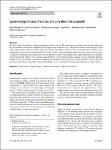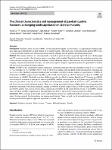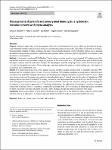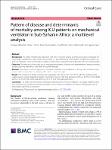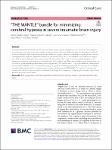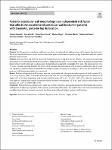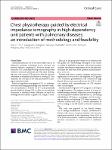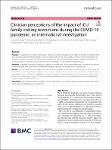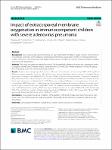Search
Author
- Daqing, Ma (3)
- Alexis, Ferré (2)
- Anna, Lybeck (2)
- Ashish K., Khanna (2)
- next >
Subject
- intensive care unit (8)
- acute respiratory dist... (5)
- chronic obstructive pu... (5)
- ICU (5)
- next >
Has File(s)
Search Results
Because of their low incidence, studies about carpal fractures are rare. The aim of the present study was to analyze epidemiology and treatment of fractured carpal bones. We retrospectively analyzed data of 178 patients admitted to our emergency room with carpal fractures over 6 years. More males than woman were injured. In 91%, a CT scan was performed. The most commonly affected bone was the triquetrum followed by the scaphoid. Almost all triquetral fractures were treated conservatively as opposed to perilunate dislocations that were all operated on. Half of all patients with scaphoid fractures were operated. Young men had the highest risk to sustain a carpal fracture. |
Paediatric pelvic fractures (PPFs) are uncommon but signify serious trauma. A comprehensive multidisciplinary approach is needed due to a high number of associated injuries. This study aims to retrospectively analyse PPFs over a 5-year period and evaluate how advancing skeletal maturity changes fracture patterns and management plans. |
Numerous approaches to the management of juvenile and aneurysmal bone cysts (ABC) are described in the specialist literature together with discussion of the associated healing and recurrence rates. Since there is currently no evidence-based treatment standard for these conditions, the aim of this systematic literature review with meta-analysis was to examine the different management approaches, evaluate the corresponding clinical outcomes and, as appropriate, to formulate a valid treatment recommendation. |
The global mortality rate of patients with MV is very high, despite a significant variation worldwide. Previous studies conducted in Sub-Saharan Africa among ICU patients focused on the pattern of admission and the incidence of mortality. However, the body of evidence on the clinical outcomes among patients with MV is still uncertain. |
To ensure neuronal survival after severe traumatic brain injury, oxygen supply is essential. Cerebral tissue oxygenation represents the balance between oxygen supply and consumption, largely reflecting the adequacy of cerebral perfusion. Multiple physiological parameters determine the oxygen delivered to the brain, including blood pressure, hemoglobin level, systemic oxygenation, microcirculation and many factors are involved in the delivery of oxygen to its final recipient, through the respiratory chain. |
Smaller posterior acetabular walls have been shown to independently influence the risk for bipolar hip dislocation. We asked whether differences would also be observed in patients with traumatic posterior hip dislocation with and without posterior wall fractures. |
Chest physiotherapy (CPT) has been widely used as an adjunctive treatment to facilitate airway clearance and promote effective coughing [1]. Previous studies indicated that CPT could improve lung function and prevent ventilator-associated pneumonia [2]. One main challenging issue with current CPT practice is that the objective assessment of ventilation distribution is missing [3]. Consequently, the CPT plan is not fully personalized according to individual needs. |
Toward nutrition improving outcome of critically ill patients: How to interpret recent feeding RCTs? Although numerous observational studies associated underfeeding with poor outcome, recent randomized controlled trials (RCTs) have shown that early full nutritional support does not benefit critically ill patients and may induce dose-dependent harm. Some researchers have suggested that the absence of benefit in RCTs may be attributed to overrepresentation of patients deemed at low nutritional risk, or to a too low amino acid versus non-protein energy dose in the nutritional formula. |
To guarantee the safety of the public, clinicians and patients during the COVID-19 pandemic, hospital visits were severely restricted internationally. There are limited data on the precise impact of these visiting restrictions on Intensive Care Unit clinicians. Our objectives therefore were to explore the impact of family visitation restrictions on clinicians and care delivery and describe innovation alongside areas for potential improvement. |
Severe adenovirus (Adv.) pneumonia can cause significant mortality in young children. There has been no worldwide consensus on the impact of extracorporeal membrane oxygenation (ECMO) in immunocompetent children with severe Adv. pneumonia. This study aimed to assess the impact of ECMO in immunocompetent children with severe Adv. pneumonia. |

